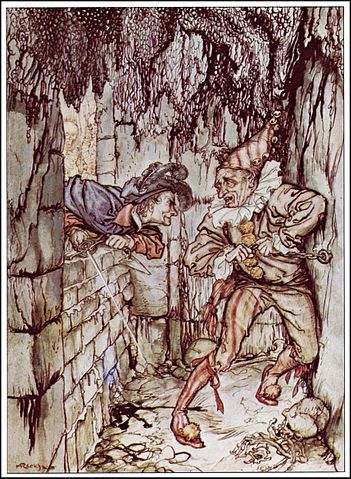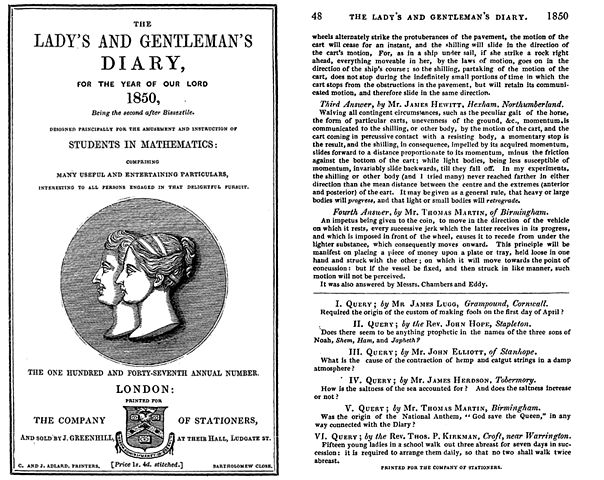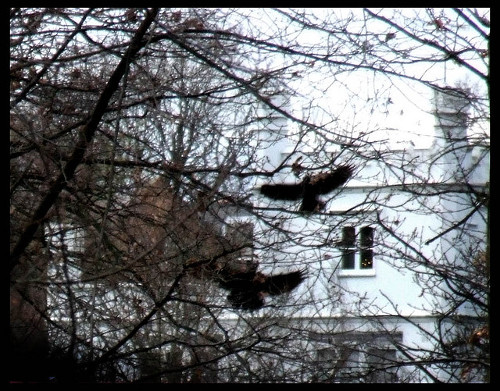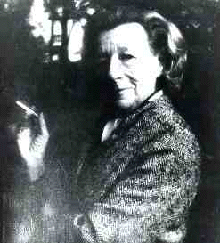
obstaculous
adj. of the nature of an obstacle
sufflaminate
v. to put an obstacle in the way of; to obstruct
intermure
v. to enclose between walls, to wall in
circummure
v. to wall round

obstaculous
adj. of the nature of an obstacle
sufflaminate
v. to put an obstacle in the way of; to obstruct
intermure
v. to enclose between walls, to wall in
circummure
v. to wall round
In 1799, Massachusetts passed a law restricting private banking companies from issuing their own currency notes without the consent of the legislature. This was well intended: If unlimited paper money were allowed to circulate, the resulting inflation would play havoc with the finances of ordinary people.
Unfortunately, the result was that legitimate currency became harder and harder to find. In Maine, where only a single bank existed, people were increasingly desperate for currency, and so the Portland merchant John Taber began to circulate notes for 1, 2, 3, and 4 dollars, payable to the bearer in silver on demand, despite the law:

This worked for a while, propped up by Taber’s reputation. But Taber’s profligate son Daniel began to print bills for his own use as he needed them, and when Massachusetts repealed its law John Taber and Son were forced into bankruptcy.
When it was over, Taber approached his old partner Samuel Hussey, who owed him $60. Hussey invited him into his counting room, counted out the amount in Taber’s own now-worthless bills, and asked for a receipt.
Taber said nervously, “Now, thee knows, friend Hussey, this money is not good now.”
“Well, well, that is not my fault,” said Hussey. “Thee ought to have made it better.”
(From the Collections and Proceedings of the Maine Historical Society, 1898.)
The square root of 2 is 1.41421356237 … Multiply this successively by 1, by 2, by 3, and so on, writing down each result without its fractional part:
![]()
Beneath this, make a list of the numbers that are missing from the first sequence:

The difference between the upper and lower numbers in these pairs is 2, 4, 6, 8 …
From Roland Sprague, Recreations in Mathematics, 1963.

“Fifteen young ladies in a school walk out three abreast for seven days in succession: it is required to arrange them daily, so that no two shall walk twice abreast.”
The Rev. Thomas Penyngton Kirkman posed this query innocently in The Lady’s and Gentleman’s Diary in 1850. It’s trickier than it looks — though seven solutions are possible, they’re difficult to discover by trial and error. Here’s one:

Each letter appears once in each row, but no two letters share a cell more than once. The problem’s simplicity made it popular among Victorian amateur mathematicians, and Kirkman later complained that it had eclipsed his more serious work — though he took pains to dispute James Joseph Sylvester’s claim to have invented the problem himself.
Do such problems generally have solutions? Surprisingly, the answer remained unknown until just last January, when Oxford mathematician Peter Keevash showed that the answer is yes if certain basic requirements are met. Keevash’s result was “a bit of an earthquake as far as design theory is concerned,” said Cambridge mathematician Timothy Gowers.
Now that the schoolgirl problem is under control, a related challenge has taken its place. If 20 golfers want to arrange themselves into different foursomes on five successive days, is it possible to plan the groups so that each golfer plays no more than once with any other golfer? Formally the “social golfer problem” remains unsolved — though tournament organizers work out individual solutions every day.
(Thanks, Martha.)
In Ward v. Ward, a North Carolina court’s entire finding rested on the presence of a single comma. The will of Alvin T. Ward read:
My Trustee is directed to pay such amounts of and from the income generated by said trust, and from the principal of said trust if he deems same to be advisable, to, for, or on account of my said wife in quarterly installments or more frequently if he deems advisable and if practicable.
Is the trustee required to pay the income to Ward’s wife, or can he use his discretion? The income payments are required, ruled the court: The comma after “said trust” shows that only the distribution of the principal is left to the trustee’s judgment.
In Henderson v. State, Jacob Henderson’s 1984 burglary conviction in Mississippi was reversed in part because of a misplaced period:
The Grand Jurors for the State of Mississippi, … upon their oaths present: That Jacob Henderson … on the 15th day of May, A.D., 1982.
This is a “non-sentence,” noted the court. “The unmistakable period after 1982 is used by astute defense counsel to nail down the point — that the indictment fails to charge that Jacob Henderson did anything on May 15, 1982.” (This whole indictment is a notorious trainwreck.)
And in People v. Vasquez, a New York court disregarded an affidavit and dismissed a complaint because a misplaced comma made it unclear whether a key affidavit was hearsay:
“It may be that the confusion [about the affidavit] arises from the typographical error of placing a comma before the expression ‘upon information and belief,'” wrote the court. “Had the comma not existed, the entire expression ‘and that the assertion upon information and belief’ would have referred back to the earlier mentioned accusatory instruments so as to render the affidavit non-hearsay.”

A problem from the second Balkan Mathematical Olympiad, 1985:
Of the 1985 people attending an international meeting, no one speaks more than five languages, and in any subset of three attendees, at least two speak a common language. Prove that some language is spoken by at least 200 of the attendees.

In 1876 London was riveted by the dramatic poisoning of a young barrister and the sordid revelations that emerged about his household. In today’s show we’ll review the baffling case of Charles Bravo’s murder, which Agatha Christie called “one of the most mysterious poisoning cases ever recorded.”
We’ll also get an update on career possibilities for garden hermits and puzzle over how the police know that a shooting death is not a homicide.

“Happiness, whether consisting in pleasure or virtue, or both, is more often found with those who are highly cultivated in their minds and in their character, and have only a moderate share of external goods, than among those who possess external goods to a useless extent but are deficient in higher qualities.” — Aristotle
“Money only appeals to selfishness and always tempts its owners irresistibly to abuse it. Can anyone imagine Moses, Jesus, or Gandhi armed with the money-bags of Carnegie?” — Albert Einstein, The World As I See It, 1949
Where wealth and freedom reign, contentment fails,
And honour sinks where commerce long prevails.
— Oliver Goldsmith, The Traveller, 1764
“The essence of philosophy is that a man should so live that his happiness shall depend as little as possible on external things.” – Epictetus
“The most necessary disposition to relish pleasures is to know how to be without them.” — Marquise de Lambert, A Mother’s Advice to Her Son, 1726
“It is preoccupation with possessions, more than anything else, that prevents us from living freely and nobly.” — Bertrand Russell
“Who is rich? He that is content. Who is that? Nobody.” — Benjamin Franklin

In Lillian Hellman’s 1973 memoir Pentimento, she describes a childhood friend whom she calls “Julia” who became active in the Austrian underground during World War II. The book was made into the Oscar-winning 1977 film Julia, starring Jane Fonda and Vanessa Redgrave.
But after the book appeared, readers noticed something peculiar. Julia strongly resembled a real person, Muriel Gardiner, a psychoanalyst. Both women were millionaires’ daughters who had attended Wellesley and Oxford, moved to Vienna to study with Freud, bore daughters, became socialists, and participated in anti-Fascist and anti-Nazi activities before the war. But where Gardiner sailed for the United States in 1939, Hellman’s Julia was tortured to death by Nazis. Hellman claimed that she flew the body home but had it cremated when she was unable to find Julia’s mother.
Despite all these similarities, Hellman insisted that Julia was a different person and said she had never heard of Gardiner. “She may have been the model for somebody else’s Julia,” she told the New York Times, “but she was certainly not the model for my Julia.” She said she refused to reveal her own Julia’s name for personal and legal reasons.
Gardiner wrote to Hellman in 1976, inquiring about all this, but never received a reply. She had kept silent about her activities for 40 years — but it’s notable that lawyer Wolf Schwabacher had socialized with Hellman in Europe while Gardiner was opposing Fascism in Vienna, and also shared a house with Gardiner after the war.